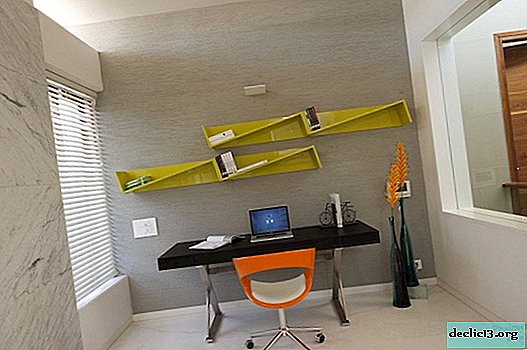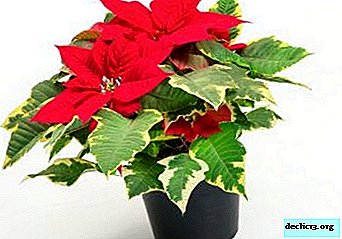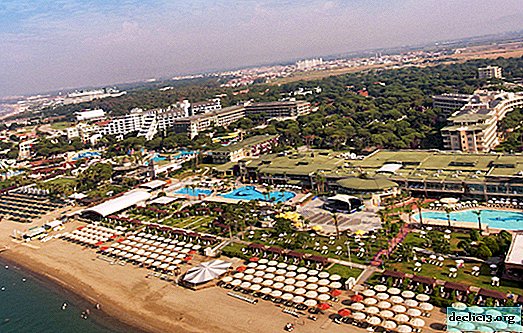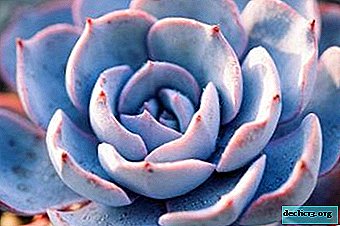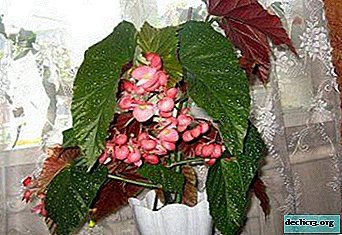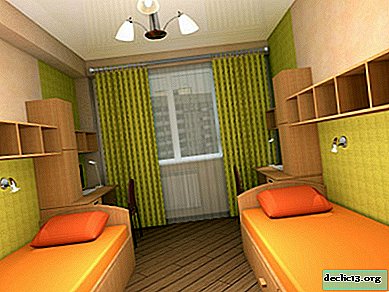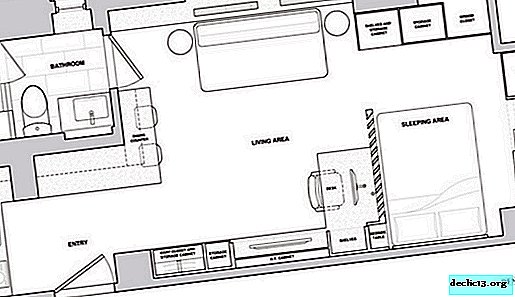Ampel Balsam: planting and care. A beautiful plant in your home

Ampel Balsam is an ornamental crop suitable for indoor cultivation. She got this name due to the stems, which bend very much, and the pots have to be suspended.
If you translate the word Ampel from German, it turns out that it means a hanging vase for flowers. Hence, balsam and began to be called ampelous.
We learn more about this charming and at the same time unpretentious plant.
Botanical Description and History
Until today, there is no exact theory regarding the origin of this flower. Many legends remained among the people, but none of them received confirmation. It is only known that the subtropics of Africa and North America are considered to be the birthplace of the plant. The first plants appeared in Europe in 1596, after which they began to be in special demand. Under natural conditions, ampelous balsam prefers a warm climate and high humidity.
Varieties
Waller's terry balsam. This type of plant is considered the most decorative (more details about Waller balsam can be found here). This is the parent of many modern hybrids. It features abundant flowering with reddish-brown leaves and juicy stems. There are so many flowers that sometimes they cover all the leaves.

Balsam Hawker. It is the parent of hybrids like Impatiens New Guinea. It features elongated leaves and large buds. Balsam blooms throughout the year. Positively responds to the abundance of sunlight.

Balsam Niamese. This variety actively decorates balconies and apartments, as it is particularly decorative. It is characterized by red, yellow, two-tone flowers, the shape of which resembles beans.

Appearance and features
This herbaceous plant can be grown as an annual and perennial. Belongs to the balsamic family. The stems of the plant are juicy, branched. Their height is 15-50 cm. The leaves are green, reddish-green, and wavy at the edges. With increased humidity, liquid droplets form at the tips.
The flowers of the culture are located in the axils of the leaves, their color can be:
- white
- pink;
- orange
- in red;
- lilac;
- with stripes and spots.
Hybrids with double flowers and multicolor leaves were obtained. The size of the flowers is 6-8 cm. Despite the small size, they are very bright, like lights.
At the end of flowering, balsam form green fruits. After ripening, they form a dry box with shifts. Sometimes it’s enough to touch it lightly, as the seeds are simply scattered around. Because of this feature, the plant is popularly called "touchy." It’s not in vain that culture is called an everlasting flower, since flowering is plentiful and is observed almost throughout the year.
Photo
Balsam looks like this:





Landing rules
Landing activities are reduced to compliance with the following recommendations:
- Plant seeds on seedlings in mid-March. Before planting, keep them in a solution of potassium permanganate for disinfection, and then rinse with warm water.
- For planting, prepare containers, fill with substrate and decompose the planting material, slightly pressing down and sprinkling with a thin layer of sand.
- Pour the soil a little, and cover the container itself with film or glass. This will save heat.
- Set the container with seedlings in a warm and sufficiently lit place. Direct sunlight for balsam is dangerous. But without the sun, the plant will grow poorly. So you have to look in the house for a place where there is a lot of diffused sunny place.
- Every day, remove the film or glass for ventilation. Ensure that the soil does not dry out.
- As soon as 3 leaves are formed, lead a pick. For seating in separate pots, choose not too large containers. The ampelous balsam feels comfortable in cramped conditions.
- After planting, water daily. At the same time, make sure that there is no stagnation of water.
We watch a video where in very detail, in detail the process of sowing balsam seeds for seedlings is shown:
Lighting and location
Attention! The flower is unpretentious to lighting. It can grow calmly even in the corner of the room. But to achieve abundant and constant flowering is possible only if there is bright light.On the southern window in the midst of summer, the flower should not be kept or you need to create him protection from the scorching rays of the sun. The east and west windows are great. In summer, take balsam to the balcony.
A flowering plant will be an excellent decoration for the garden, but it can not be planted in the sun. Light penumbra will do.
Soil requirements
 For planting ampel balsam, it is necessary to prepare a loose, slightly acidic substrate. You can cook it if you take in equal amounts such components:
For planting ampel balsam, it is necessary to prepare a loose, slightly acidic substrate. You can cook it if you take in equal amounts such components:
- peat;
- vermiculitis;
- sheet earth;
- river sand.
Ready-made soil composition can be bought at the store. Before using it, put some sand in the pot. It is necessary to quickly remove excess moisture from the soil. If this is not done, then the root system of young plants will rot.
How to care?
Watering
Ampelous balsam - a moisture-loving culture. It is distinguished by juicy and moisture-filled stems. With a lack of water, the flower will not disappear, but it will lose elasticity and discard the lower leaves. In summer, provide abundant watering. The earth must always be wet. In winter, reduce moisture, preventing drying out of an earthen coma. Stagnant fluid in the pan is harmful, as this is fraught with rotting of the roots and stems.
Top dressing
Feeding is necessary every 2 weeks, starting in April and ending in August. Mineral fertilizers designed for flowering plants are excellent for this. Make sure that nitrogen fertilizers are not in excess, as this will lead to rapid growth of stems and inhibit the formation of flowers.
The plant responds positively to Kemira. This fertilizer, which contains the following components:
- phosphorus;
- nitrogen;
- magnesium;
- potassium;
- manganese;
- boron;
- copper;
- zinc;
- iron;
- molybdenum.
Dormancy
At the end of flowering, trim the peduncles and set the plant in a cool place where the temperature regime exceeds +15 degrees. At the same time, water the balsam in a moderate amount. When new shoots form in February, place the flower in a room with a higher temperature and water more often.
Common Diseases and Pests
 In winter, ampel balsam is affected by fungal diseases, and especially gray rot. To eliminate this trouble, you need to clean the roots of the plant from the old soil and transplant it into a new container with soil.
In winter, ampel balsam is affected by fungal diseases, and especially gray rot. To eliminate this trouble, you need to clean the roots of the plant from the old soil and transplant it into a new container with soil.
If the room is low in humidity, then this is fraught with the attack of a spider mite. This can be determined by the twisted leaves. They fall over time. To eliminate the spider mite, such drugs will help: Actellik, Neoron.
A whitefly may be affected by the plant, due to which the leaves begin to turn yellow. Insects settle on the inside of the lower leaves. For treatment use Fufaron, Decis.
Propagation Features
Ampelic balsam is propagated by seed or cuttings of apical shoots. Each of these methods has its own characteristics:
- The seeds of the plant are large. Sold in mix. Their landing is carried out in February art in greenhouses. Germinate after 3-4 weeks at a temperature of 23-25 degrees.
- Cut stems 8-10 cm long in spring or summer and root them in water. You can use moist soil with the addition of sand. Cuttings take root in a few days, and then they are transplanted into separate small pots. After 2-3 months, young saplings can bloom.
We learn how to cut the ampelous balsam in detail by watching the following video:
Ampel balsam is appreciated by gardeners due to abundant, bright flowering and unpretentiousness in care. Due to the presence of a wide palette of shades, everyone can create a full-fledged floral arrangement on his balcony, which will delight him with his beauty for almost the whole year.


